How to Bounce Back from Public Failure: Reclaiming Confidence, Purpose, and Power
Introduction
Few things sting more than failing — especially when everyone sees it.
Whether it’s a business collapse, a relationship breakup, a rejected project, or a social humiliation, public failure can make you feel exposed and powerless. Your mind replays every detail, your body floods with shame, and you begin questioning your worth.
But here’s the truth: public failure doesn’t define you — it refines you.
If you handle it consciously, it becomes the turning point that shapes your resilience, authenticity, and long-term success.
This guide will help you understand the psychology of shame, rebuild self-trust, and use failure as a foundation for growth — not a life sentence. 🌱
Looking for supplements for This? Click here.
🌧️ The Emotional Weight of Public Failure
When failure is witnessed, it hits two primal fears:
Rejection — our ancient need for belonging is threatened.
Loss of control — we feel powerless to rewrite the story.
🧠 The Brain on Failure
Failure activates the same brain regions as physical pain — particularly the anterior cingulate cortex. That’s why embarrassment feels viscerally painful.
At the same time, your stress hormones spike:
Cortisol increases anxiety and self-criticism.
Adrenaline keeps you alert but restless.
Oxytocin (connection hormone) drops — making you feel isolated.
💬 You’re not weak for hurting — your biology interprets public failure as a survival threat.
🌿 Step 1: Acknowledge the Shock
After failure, your instinct may be to hide or deny. But healing starts with honesty.
Say out loud:
“This hurts.”
“I’m embarrassed.”
“I feel judged.”
Naming your emotions reduces amygdala activity — the brain’s panic center — and activates your rational prefrontal cortex.
🪷 You can’t move through pain you refuse to name.
🌙 Step 2: Regulate Your Nervous System

Public humiliation throws your nervous system into fight, flight, or freeze. You might feel tense, shaky, or mentally blank.
🌬️ How to Ground Yourself
Breathwork:
Inhale 4s → Hold 4s → Exhale 6s.
Repeat until your body feels heavier, calmer.
Want to try Breathwork? Click Here.
Cold Water or Splash:
Activates the vagus nerve, signaling safety.
Grounding Through Touch:
Feel your feet pressing into the floor.
Press your hands together; remind yourself, “I’m still here.”
When your body calms, your brain regains clarity.
💚 Regulation before reflection — always.
🌤️ Step 3: Release Shame, Not Responsibility
Shame says, “I am bad.”
Responsibility says, “I made a mistake, and I can learn.”
Failure becomes toxic only when you fuse your identity with your outcome.
💡 Reframe Example
Shame: “Everyone saw I’m a failure.”
Resilience: “Everyone saw me take a risk.”
Separate self-worth from performance. The moment you do, you reclaim your emotional freedom.
🪷 Failure is a behavior, not a biography.
🌸 Step 4: Understand the Psychology of Public Judgment
When others witness your failure, you imagine they’re still thinking about it — but most aren’t.
Psychologists call this the “spotlight effect.”
We overestimate how much people notice or remember our mistakes.
Reality check:
People move on quickly because they’re focused on their own lives.
💬 The only person still replaying it is you.
🌿 Step 5: Process the Story, Don’t Suppress It
Suppressing emotions doesn’t erase pain — it buries it. Over time, that turns into anxiety or bitterness.
Try Expressive Writing Therapy:
Write for 20 minutes about what happened.
Don’t censor. Include feelings, facts, and lessons.
This helps the brain integrate emotional experiences into coherent stories — reducing rumination and trauma.
🪶 Writing transforms chaos into coherence.
🌞 Step 6: Reframe Failure as Data, Not Doom
Emotionally, failure feels final. Logically, it’s feedback.
When you can shift from judgment to curiosity, the pain loses its power.
Ask:
What actually failed — my idea, my timing, or my strategy?
What part of this was within my control?
What can I improve next time?
💬 Failure isn’t a verdict; it’s a mirror.
🌼 Step 7: Rebuild Self-Trust Through Action
After public failure, your confidence in your own judgment takes a hit.
To rebuild it, take small, consistent actions that prove you can rely on yourself again.
Examples:
Meet one small goal daily (walk, email, create).
Keep promises to yourself, even small ones.
Do something that makes you proud — unrelated to the failure.
Each micro-success repairs the “trust bridge” between you and your self-belief.
🌿 Self-trust grows from repetition, not perfection.
🌻 Step 8: Redefine Success
Sometimes what looks like failure is just redirection.
Maybe that job, relationship, or project ended because it was misaligned.
Ask yourself:
“What values did I compromise before this failure?”
“What part of this experience clarifies who I want to become?”
Redefine success as alignment, not applause.
🪷 True success isn’t being admired; it’s being authentic.
💞 Step 9: Reconnect with Safe People
Public failure isolates — you feel exposed. But hiding amplifies shame.
Reach out to people who can hold space without judgment:
Close friends or mentors.
Supportive communities (online or offline).
A therapist or coach trained in resilience work.
Sharing your story out loud activates oxytocin — the “connection hormone” — and physically lowers cortisol.
💬 Connection is the antidote to shame.
🌸 Step 10: Practice Radical Transparency
If your failure affected others (employees, colleagues, audience), transparency builds trust faster than perfection ever could.
Admit what happened honestly. Share what you learned. Outline what you’re doing next.
People respect accountability — not flawless façades.
🌿 Owning your story disarms critics and inspires courage.
Looking for online therapy ? Click Here.
🌙 Step 11: Protect Against Cognitive Distortions
In the aftermath, your brain exaggerates negativity:
“Everyone thinks I’m incompetent.”
“This will haunt me forever.”
Challenge those distortions with logic:
“What’s the evidence?”
“Who specifically thinks that?”
“What’s a more balanced view?”
The goal isn’t toxic optimism — it’s accurate thinking.
💚 Resilience is emotional accuracy under pressure.
🌞 Step 12: Rebuild Identity Beyond Achievement
Public success often becomes fused with self-worth. When that image cracks, you face an identity void.
This is your chance to rebuild identity based on character, not status.
Ask:
Who am I when no one is watching?
What values do I want my next chapter to represent?
Your failures strip away what’s performative — revealing what’s real.
🪷 Public loss often precedes private awakening.
🌻 Step 13: Learn the Art of Self-Forgiveness
Self-forgiveness is not self-excusing — it’s self-liberation.
Write:
“I forgive myself for not knowing what I know now.”
“I release the need to punish myself to prove I’ve learned.”
Forgiveness rebalances your nervous system, reduces intrusive thoughts, and restores energy for new creation.
🌿 You can’t grow while you’re still hitting yourself.
🌼 Step 14: Build a Resilience Routine
Resilience isn’t a mindset — it’s a habit.
🧘 Daily Recovery Practices
Morning: Breathwork or journaling (5 minutes).
Midday: Grounding break (walk, stretch, hydrate).
Evening: Gratitude list (3 things learned or loved).
Your brain craves predictability after chaos. Routine restores safety.
💚 Consistency rebuilds confidence faster than motivation.
🌸 Step 15: Separate External Judgment from Internal Growth
The world sees your failure through headlines or gossip. You experience it through transformation.
Your job is not to control perception — it’s to control your response.
If people misunderstand you, let time and integrity tell the story.
💬 Public noise fades; private growth lasts.
🌿 Step 16: Reintroduce Yourself to the World
At some point, you’ll have to step back out — with a new voice and posture.
When you do, focus on value, not validation.
Show your evolution through service, creativity, or leadership — not apology.
🪷 You don’t need to prove you’ve changed; you need to embody it.
🌞 Step 17: Build a Failure-Resilient Mindset
When you normalize failure, you remove its sting.
🧠 Reframe the Meaning
Failure = data.
Embarrassment = emotional training.
Rejection = redirection.
The world’s most successful people — from Oprah to Elon Musk — built resilience through visible setbacks.
🌿 The difference between the defeated and the resilient is interpretation.
💞 Step 18: Protect Your Inner Dialogue
Your self-talk determines recovery speed.
Monitor the phrases you repeat:
“I’ll never recover” → “This is temporary.”
“I ruined everything” → “I’m rebuilding stronger.”
“People are laughing at me” → “I’m learning in public.”
Your subconscious believes what it hears most. Speak with compassion.
🪷 Kind self-talk is internal first aid.
🌼 Step 19: Manage Digital Aftermath
If your failure unfolded online, digital resilience is key.
💻 Coping Tips
Don’t read every comment.
Avoid doomscrolling or responding defensively.
Curate your feed with inspiration, not triggers.
Take a temporary break if needed — silence is recovery.
Your mental health matters more than your online reputation.
💬 Healing offline rebuilds strength online.
🌙 Step 20: Turn Failure into a Case Study
Transform your story into wisdom for others.
Write, speak, or mentor from your lessons learned.
Not from perfection, but from perspective.
When you teach what broke you, your pain becomes purposeful.
🌿 Public failure becomes public service when shared with honesty.
🌻 Step 21: Reconnect with Joy and Play
After humiliation, your nervous system associates visibility with danger.
To rewire this, reintroduce joyful exposure.
Share small wins with trusted people.
Engage in creative projects without pressure.
Do something public for fun — not validation.
Laughter restores social confidence.
💚 Play is exposure therapy for the wounded ego.
🌸 Step 22: Practice Emotional Sobriety
After failure, emotions swing — self-pity, anger, defensiveness. Emotional sobriety means responding, not reacting.
Pause before decisions, emails, or posts. Ask:
“Am I grounded or triggered?”
“Will this action build peace or prove a point?”
🌿 Maturity is when you stop trying to win and start choosing calm.
🌞 Step 23: Use Visualization for Confidence Rebuilding

Visualization rewires confidence faster than words alone.
Imagine yourself walking into a room again — head high, heart calm.
Feel the pride of resilience.
Visualization activates mirror neurons and primes you to embody calm under real pressure.
💬 See it. Feel it. Then live it.
🌼 Step 24: Find Humor in Hindsight
Laughter diffuses shame and restores perspective.
Humor doesn’t trivialize failure — it transforms it.
If you can laugh about what broke you, you’re already healing.
🪷 Comedy is resilience disguised as lightness.
🌻 Step 25: Rewrite the Narrative
In time, you’ll realize failure didn’t destroy you — it revealed you.
Rewrite your story consciously:
“I faced something hard and learned strength.”
“That chapter taught me what truly matters.”
“My worth never depended on others’ applause.”
You are not your past — you are the author writing its sequel.
🌿 Failure ends a chapter, not your book.
💫 Final Thoughts: Rising Beyond the Fall
Public failure feels like fire, but fire also forges steel.
What burns away is ego, illusion, and pretense. What remains is authenticity, humility, and courage.
In time, you’ll realize that the people who watched you fall are irrelevant compared to the person you became when you stood up again.
“You don’t rebuild from applause — you rebuild from silence.” 🌸
Every failure contains an invitation: to return to yourself, rebuild your values, and lead with integrity.
That’s real success — the kind that no one can take away.
Looking for online therapy ? Click Here.
📚 References
Brown, B. (2012). Daring Greatly. Penguin Random House.
Neff, K. (2011). Self-Compassion. HarperCollins.
Seligman, M. E. P. (2011). Flourish. Free Press.
McEwen, B. S. (2007). Physiology and neurobiology of stress and adaptation. Physiological Reviews.
Siegel, D. J. (2010). The Mindful Brain. W.W. Norton & Company.
Frankl, V. (2006). Man’s Search for Meaning. Beacon Press.
Kabat-Zinn, J. (2013). Full Catastrophe Living. Random House.
Lazarus, R. S. (1991). Emotion and Adaptation. Oxford University Press.
Hanson, R. (2013). Hardwiring Happiness. Harmony Books.
Dweck, C. S. (2006). Mindset: The New Psychology of Success. Random House.
Related Posts
-
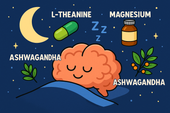
Nootropics That Promote Calm and Rest
Explore the world of calming nootropics — natural brain enhancers that promote relaxation, better focus, and deeper rest. Learn how L-Theanine, magnesium, ashwagandha, and other adaptogens help balance your nervous system, reduce stress, and support restorative sleep.
-

Best Natural Supplement Stack for Sleep
Discover the best natural supplement stack for deep, restorative sleep. Learn how nutrients like magnesium, L-theanine, glycine, and calming herbs such as chamomile and ashwagandha work together to relax your body, calm your mind, and improve sleep quality—naturally and safely.
-
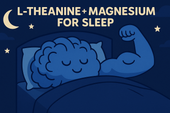
Combining L-Theanine and Magnesium for Sleep: A Calm Night, Naturally
Discover how combining L-Theanine and Magnesium can help you drift into deep, restorative sleep. Learn how this natural duo calms the mind, relaxes the body, and supports your nervous system—without grogginess the next morning.
-

How to Sleep Better After Intense Workouts
Struggling to fall asleep after a tough workout? Learn how to optimize your post-training recovery with nutrition, hydration, and science-backed sleep strategies. Discover how to calm your nervous system, balance hormones, and wake up fully recharged for your next session.
-

Ashwagandha and Valerian: A Bedtime Combo for Deep Rest and Emotional Reset
Discover the calming synergy of Ashwagandha and Valerian root, two natural sleep aids that help quiet the mind, ease anxiety, and promote deeper rest. Learn how this herbal duo supports the nervous system, balances stress hormones, and restores emotional peace — without next-day grogginess.
-
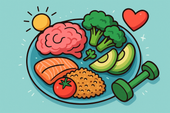
How to Create a Resilience-Boosting Diet
Discover how to build emotional and physical strength from the inside out with a resilience-boosting diet 🍎. Learn which foods stabilize your mood, how supplements like magnesium and omega-3s strengthen your stress response, and why pairing nutrition with breathwork and therapy creates lasting calm, focus, and vitality 🌿💪.
-

Best Teas and Herbal Blends for Calmness: Nature’s Way to Restore Inner Peace
Ashwagandha, the ancient adaptogenic herb, helps your body find balance during stress. Known as “Indian ginseng,” it supports cortisol regulation, boosts energy, and restores calm clarity. Discover how this powerful root promotes resilience, emotional balance, and steady vitality — one cup at a time. 🌸
-

Parenting and Emotional Strength: How to Raise Children Without Losing Yourself
Empathy is the bridge that connects hearts — the quiet power to understand, feel, and support another’s emotions without judgment. Learn how empathy strengthens relationships, enhances communication, and cultivates deeper compassion in everyday life. 🌿
-

Coping with Financial Stress Through Resilience: How to Stay Grounded When Money Feels Tight
Body awareness is the foundation of emotional resilience. By tuning into your body’s signals — tension, fatigue, or calm — you learn to recognize stress before it overwhelms you. Discover how mindfulness, gentle movement, and breathwork can deepen your connection with your body and restore balance from the inside out. 🧘
-

How to Stay Positive During Chronic Illness: A Guide to Emotional Strength and Hope
Creativity is more than art — it’s a form of healing. Whether through painting, writing, music, or small acts of expression, creativity helps release emotion, calm the nervous system, and reconnect you to joy. Discover how to use creativity as a tool for emotional balance, resilience, and self-discovery. 🌿
-
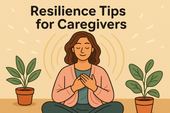
Resilience Tips for Caregivers: How to Stay Strong While Caring for Others
Joy isn’t the absence of pain — it’s the quiet strength to find light even in challenging times. Cultivating joy through small daily moments restores balance, releases stress, and reminds you of life’s beauty. Learn how to reconnect with authentic happiness, rebuild emotional energy, and nurture your nervous system through gratitude, presence, and play. 🌿
-

Building Resilience After a Breakup: How to Heal, Rebuild, and Rise Stronger
Social connection is one of the strongest predictors of emotional resilience. During difficult times, genuine relationships act as anchors — calming the nervous system, reducing stress hormones, and helping you regain perspective. Learn how cultivating real human connection can strengthen your mind, heart, and overall well-being. 🌿
-

How to Stay Emotionally Strong During Job Loss
Your emotions are powered by brain chemistry — a delicate balance of neurotransmitters like serotonin, dopamine, and cortisol. When these chemicals work in harmony, you feel calm, focused, and resilient. Learn how daily habits, nutrition, and mindfulness can support your brain chemistry and boost emotional well-being naturally. 🌿
-
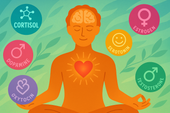
The Role of Hormones in Emotional Stability: How Your Chemistry Shapes Your Calm
Hormones shape more than your body — they shape your emotions, resilience, and sense of calm. From cortisol to serotonin, these chemical messengers influence how you react to stress, connect with others, and recover from challenges. Learn how to balance your hormones naturally to build lasting emotional stability and harmony within. 💫
-

Mitochondria and Emotional Energy: The Cellular Power Behind Your Mood
Breathwork is one of the most powerful tools for emotional regulation and cellular balance. Through intentional breathing, you can calm your nervous system, increase oxygen flow to the brain, and even support mitochondrial energy. Learn how conscious breathing connects body and mind — transforming stress into presence and emotional strength. 🌿
-

Inflammation and Its Impact on Mood Resilience: The Silent Link Between Body and Mind
Inflammation doesn’t just affect the body — it impacts the mind. Chronic inflammation alters brain chemistry, depletes serotonin, and makes emotional recovery harder. Learn how calming inflammation through nutrition, mindfulness, and sleep can restore balance, resilience, and a renewed sense of emotional strength. 💫
-
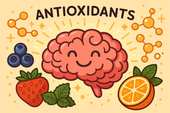
How Antioxidants Protect Emotional Well-being: The Hidden Link Between Oxidative Stress and Mental Health
Antioxidants do more than protect your body — they defend your mind. By neutralizing oxidative stress, antioxidants support serotonin, dopamine, and brain energy pathways that keep you calm, focused, and emotionally balanced. Discover how foods like berries, green tea, and dark chocolate nourish your brain, boost mood, and strengthen resilience from the inside out. 🌿✨
-
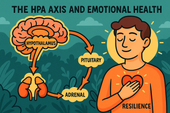
The HPA Axis and Emotional Health: The Hidden Bridge Between Stress and Mind
Neuroplasticity — the brain’s ability to rewire and adapt — is the foundation of emotional healing and resilience. When you face stress, trauma, or change, your neural pathways can reshape themselves to support new patterns of calm, focus, and self-awareness. Learn how daily practices like mindfulness, therapy, and breathwork strengthen neuroplasticity to transform emotional pain into personal growth. 🌸
-
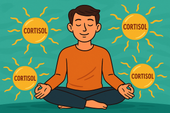
Why Cortisol Control Is Key to Resilience: Mastering Stress to Build Emotional Strength
Controlling cortisol — the body’s main stress hormone — is the secret to lasting resilience. When cortisol levels stay balanced, your mind becomes clearer, emotions steadier, and energy more sustainable. Learn how breathwork, mindset shifts, adaptogens, and daily rhythms can help you calm your stress response and build true inner strength. 🌞💪
-
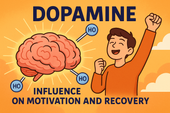
Dopamine’s Influence on Motivation and Recovery: Reigniting Drive and Balance
Healthy relationships are the foundation of emotional balance and resilience. Whether romantic, familial, or platonic, genuine connection releases dopamine, serotonin, and oxytocin — the brain’s “bonding trio” — helping us feel secure, motivated, and seen. Learn how trust, empathy, and communication not only strengthen your connections but also reshape your nervous system for deeper emotional well-being. 🌿🤝
-
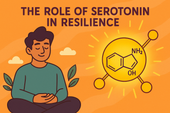
The Role of Serotonin in Resilience: How This “Mood Molecule” Shapes Emotional Strength
Serotonin — often called the “resilience molecule” — plays a vital role in how we handle stress, regulate mood, and recover from emotional challenges. Beyond happiness, this powerful neurotransmitter helps balance the gut-brain axis, stabilize the nervous system, and support emotional flexibility. Learn how nutrition, sunlight, mindfulness, and adaptogens can naturally boost serotonin and strengthen your emotional resilience. 🌞🧠
-
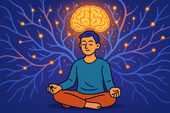
How Neuroplasticity Supports Emotional Growth: Rewiring the Brain for Resilience
Neuroplasticity is the brain’s built-in power to grow, adapt, and heal — and it’s the foundation of emotional transformation. Every mindful breath, compassionate act, or reframed thought strengthens new neural pathways that support resilience and self-awareness. Learn how your brain rewires through daily habits, helping you turn emotional challenges into opportunities for growth and calm. 🌿
-

Tai Chi and Adaptogens for Mind-Body Balance: The Art of Harmonizing Energy and Resilience
Alchemy isn’t just an ancient science — it’s a timeless symbol of transformation and inner balance. By blending the physical and spiritual, alchemy teaches us that change begins from within. Just as metals are refined into gold, we too can transmute emotional pain, stress, and chaos into clarity and strength through mindful practice and self-awareness. 🌙✨
-

Cold Therapy and Emotional Control: Training the Mind Through the Body
Cold therapy isn’t just for athletes — it’s a tool for emotional mastery. By exposing your body to controlled cold, you train your nervous system to stay calm under stress, improving focus, mood, and resilience. This article explores the science of cold exposure, its impact on hormones and the vagus nerve, and how ice baths and cold showers can help you build emotional control, one breath at a time. 🧊🧘♂️
-

How Music Influences Emotional Recovery: The Healing Soundtrack of the Mind
Neuroplasticity — the brain’s ability to rewire and heal itself — is at the heart of emotional recovery. Through mindful habits, music, therapy, and consistent mental stimulation, your brain can form new connections that support resilience and well-being. Discover how neuroplasticity turns pain into growth, helping you rebuild balance, focus, and emotional strength. 🌿
-
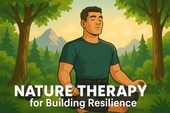
Nature Therapy for Building Resilience: Reconnecting With the Healing Power of the Earth
Nature therapy helps rebuild emotional resilience by reconnecting you with the healing rhythms of the Earth. From forest walks to sunlight exposure, nature restores balance to your nervous system, lowers stress hormones, and teaches emotional adaptability. Learn how spending time outdoors can enhance mental clarity, calm anxiety, and awaken your natural capacity to heal. 🌞
-

Breathwork Techniques That Pair with Supplements: The Ultimate Synergy for Stress Relief and Mental Clarity
Breathwork and supplements create a powerful mind-body synergy for stress relief, focus, and energy. By combining intentional breathing with adaptogens, nootropics, and calming nutrients, you can naturally regulate cortisol, sharpen mental clarity, and boost emotional balance. This guide explores the best breathwork techniques and supplement pairings to help you feel centered, calm, and energized from the inside out. 🌿
-
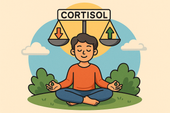
Why Cortisol Balance Matters for Emotional Strength
Balancing cortisol — your body’s main stress hormone — is essential for emotional resilience. When cortisol is chronically high, your mind stays stuck in survival mode, leading to fatigue, anxiety, and emotional instability. This article explores how nutrition, supplements, breathwork, and therapy can help restore healthy cortisol rhythms, regulate the nervous system, and strengthen your ability to handle life’s challenges with calm focus and emotional strength. 🌿
-
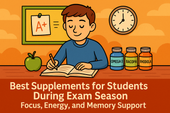
Best Supplements for Students During Exam Season: Focus, Energy, and Memory Support
Studying late into the night? Learn which natural supplements can boost focus, memory, and mental stamina during exam season — without the crash. From omega-3s to Bacopa and Rhodiola, discover your brain’s ultimate exam support stack. 🎓🧠
-
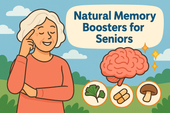
Natural Memory Boosters for Seniors: How to Keep Your Mind Sharp and Focused
Stay mentally sharp and confident as you age. Discover science-backed natural supplements and lifestyle habits that boost memory, focus, and brain longevity for seniors. 🌿🧠
-
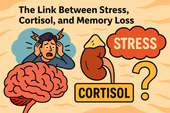
The Link Between Stress, Cortisol, and Memory Loss
Chronic stress can quietly erode your memory — and cortisol is the key culprit. Learn how stress hormones affect the brain, why the hippocampus shrinks under pressure, and how natural strategies can help you restore memory and mental clarity. 🧠✨
-
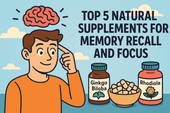
How to Build a Daily Supplement Routine for Memory Health
Want to sharpen your memory and stay mentally clear? Learn how to build a daily supplement routine for memory health — from morning focus to nighttime brain repair. Discover science-backed nutrients that boost recall, focus, and long-term cognitive resilience. 🧠🌿
-
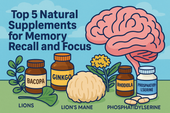
Top 5 Natural Supplements for Memory Recall and Focus
Looking to boost memory and concentration naturally? Discover the top 5 supplements — Bacopa, Ginkgo Biloba, Lion’s Mane, Rhodiola, and Phosphatidylserine — that enhance focus, recall, and long-term brain health. 🧠✨
-
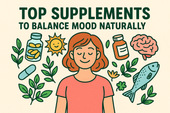
Top Supplements to Balance Mood Naturally
From omega-3s to adaptogens, discover the top natural supplements proven to support emotional balance, reduce stress, and promote inner calm — safely and effectively. 🌿✨
-
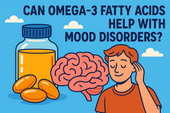
Can Omega-3 Fatty Acids Help with Mood Disorders?
Omega-3 fatty acids do more than support heart health — they can help balance mood, reduce depression, and calm anxiety. Discover how EPA and DHA nourish your brain, fight inflammation, and support emotional well-being from within. 🌊🧠
-

Vitamin D and Mood: The Sunshine Vitamin for Emotional Balance
Could the key to emotional balance be as simple as a little sunlight? Discover how vitamin D — the sunshine vitamin — influences serotonin, reduces inflammation, and helps you feel more positive and resilient year-round. ☀️💛
-

The Role of Magnesium in Reducing Irritability and Low Mood
Feeling on edge or emotionally drained? Magnesium could be the missing link between your body and your mood. Discover how this essential mineral reduces irritability, balances neurotransmitters, and helps your nervous system find calm again. 🌿✨
-
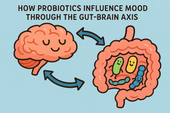
How Probiotics Influence Mood Through the Gut-Brain Axis
Discover how probiotics can do more than support your digestion—they can actually uplift your mood. This article explores the fascinating gut-brain axis and how balancing your gut bacteria through probiotics may help reduce anxiety, improve emotional stability, and support long-term mental well-being. 🌿🧠
-
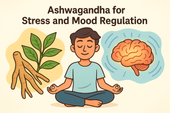
Ashwagandha for Stress and Mood Regulation
Discover how Ashwagandha, the powerful adaptogenic herb 🌿, helps your body manage stress and regulate mood. Learn how it balances cortisol, boosts GABA and serotonin, and supports emotional stability — helping you feel calm, focused, and resilient every day.
-
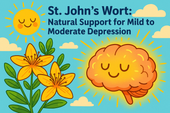
St. John’s Wort: Natural Support for Mild to Moderate Depression
Discover how St. John’s Wort, the “sunshine herb” 🌼, naturally supports mild to moderate depression. Learn how it boosts serotonin, balances mood, and promotes emotional resilience — with research showing its effectiveness compares to antidepressants, but with fewer side effects.
-
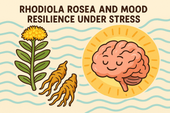
Rhodiola Rosea and Mood Resilience Under Stress
Discover how Rhodiola rosea helps your body adapt to stress 🌿. Learn how this powerful adaptogen balances cortisol, supports serotonin and dopamine, and strengthens emotional resilience — helping you stay calm, focused, and energized under pressure.
-

Chamomile and Lavender: Herbal Calm for Emotional Fluctuations
Discover how chamomile and lavender bring calm to emotional ups and downs 🌿. Learn how these two soothing herbs balance your nervous system, ease anxiety, and support restful sleep — naturally helping you find peace and emotional stability.
-
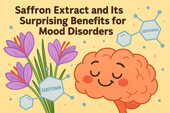
Saffron Extract and Its Surprising Benefits for Mood Disorders
Discover how saffron extract — the golden spice of joy 🌸 — can naturally support mood balance, ease anxiety, and lift mild depression. Learn what science says about its serotonin-boosting power, the ideal dosage, and how this ancient remedy compares to modern antidepressants.
-
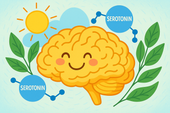
5-HTP and Serotonin: A Natural Path to Lifting Mood
Discover how 5-HTP naturally boosts serotonin 🌞 — the neurotransmitter behind mood, sleep, and emotional balance. Learn how this plant-derived compound supports happiness, reduces anxiety, and improves rest by helping your brain create more serotonin the gentle, natural way.
-
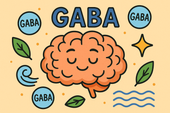
GABA Supplements for Reducing Anxiety and Mood Swings
Discover how GABA supplements can help reduce anxiety and balance mood naturally 🌿. Learn how this calming neurotransmitter works to quiet the mind, ease stress, and improve sleep — plus which nutrients and habits can boost your body’s own GABA production for long-term emotional stability.
-
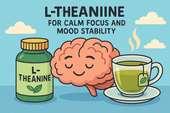
L-Theanine for Calm Focus and Mood Stability
Discover how L-theanine, the calming compound found in green tea 🍵, promotes focus, relaxation, and mood stability. Learn the science behind how it balances neurotransmitters, reduces stress hormones, and enhances clarity — helping you stay centered, calm, and productive without sedation.
-
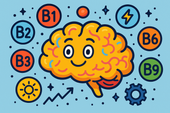
B Vitamins and Brain Chemistry: Supporting Energy and Emotional Balance
Discover how B vitamins power your brain chemistry ⚡. Learn how B6, B9, and B12 support serotonin, dopamine, and energy production — helping boost focus, mood, and emotional balance. From diet to supplements, explore how this vital nutrient group keeps your mind resilient and your energy steady.
-

N-Acetyl Cysteine (NAC) and Mood Disorders: What the Research Says
Learn how N-Acetyl Cysteine (NAC) supports brain health and mood balance 🧠. Discover how this antioxidant helps reduce oxidative stress, regulate glutamate, and improve emotional stability in depression, bipolar disorder, and anxiety — backed by cutting-edge psychiatric research.
-

Supplements for Bipolar Disorder: What May Support Stability
Discover the best supplements for bipolar disorder 🌿 that may support emotional stability and brain health. Learn how nutrients like omega-3s, magnesium, vitamin D, and NAC can help reduce inflammation, balance neurotransmitters, and complement traditional treatment safely.

















































